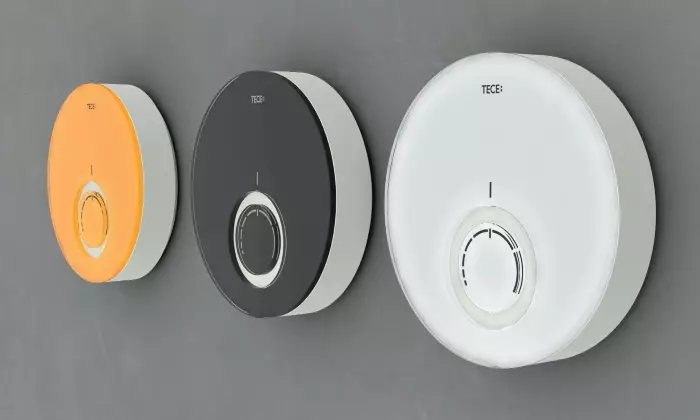
Why do you need a thermostat?
The beginning of the heating season is universally conjured with concerns about the uninterrupted operation of the heating system and the maintenance of heat. This topic is relevant both for the host of a private house and for public enterprises, offices and organizations. Insufficiently heated room or too high temperature and overwhelmed air are the main causes of the occurrence of unpleasant sensations and violation of normal human life.
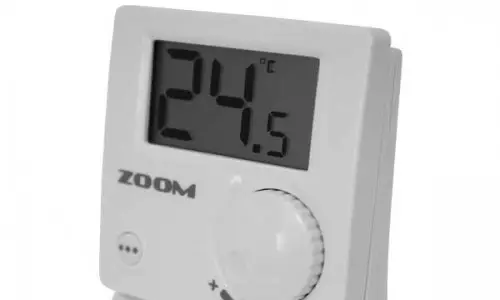
It is important to position the thermostat correctly, as well as set up. This will depend on the quality and durability of its work.
Providing in the room of comfortable living conditions is achieved by mounting in various thermal installations of a special device that allows you to adjust the necessary temperature. Such a device is called a thermostat.
Its work is to disconnect or turn on the supply of energy to the heat installation when the temperature changes.
The operation of the device occurs after information on the state of the environment from the thermal sensor, which is located in the zone that excludes the impact of heating devices.
The thermostat is classified according to the following features:
- Appointment of the device.
- Method of installation.
- Types of used thermal sensors.
- Technical capabilities of the device.
The main types and capabilities of thermostats
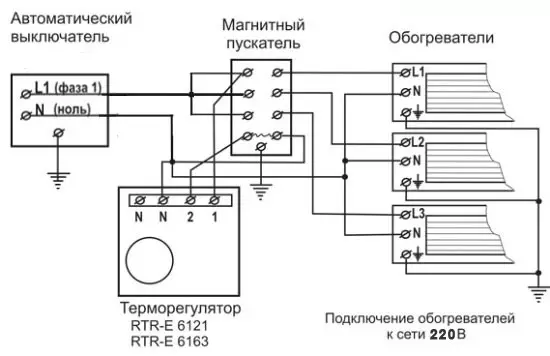
The diagram of connecting the thermostat.
There are two main types of thermostat: gaspal and liquid.
The gaspole thermostat, in contrast to the liquid type, is more sensitive to the change in the temperature mode of the environment and has a longer service life - up to 20 years. Gas condensate is used as a heat-sensitive substance.
As for the liquid type, it has more accurate temperature indicators than gaspal. In most cases, paraffin is used to fill it.
Also, thermostats are:
- Analog room. Such a device allows you to continuously maintain the selected temperature mode. However, its technical capabilities are somewhat limited. Starting and stopping, as well as a change in work parameters occur only by manually and completely exclude system programming.
- Digital room. Installation of devices of this type extends control capabilities, which reduces the load on the heating system. The digital thermostat changes and supports the temperature on the program installed in advance. In addition to the simplest functions ("convenience" and "attenuation"), it allows you to adjust the mode and automatically switch up to 4 times a day.
- Temperature regulators for the "warm floor" additive system. A feature of the functioning of such a system is its independence on air temperature, and the heating of the room is carried out at the expense of other heat plants (convector, radiator, etc.) Therefore, the operation of the thermostat is provided by the sensor installed in the floor zone.
Article on the topic: The key is scrolled in the castle: how to repair
Sometimes there is no possibility or technically difficult to regulate the operation of the heating system in the usual way. Such a situation may occur during the reconstruction of objects or in the case of additional installation of heating devices. Therefore, the optimal heat supply control in this case is the installation of a thermostat with a wireless control method.
Device and principle of thermostat
The thermostat consists of the following main elements:
- Silphone;
- stock;
- spool;
- valve.
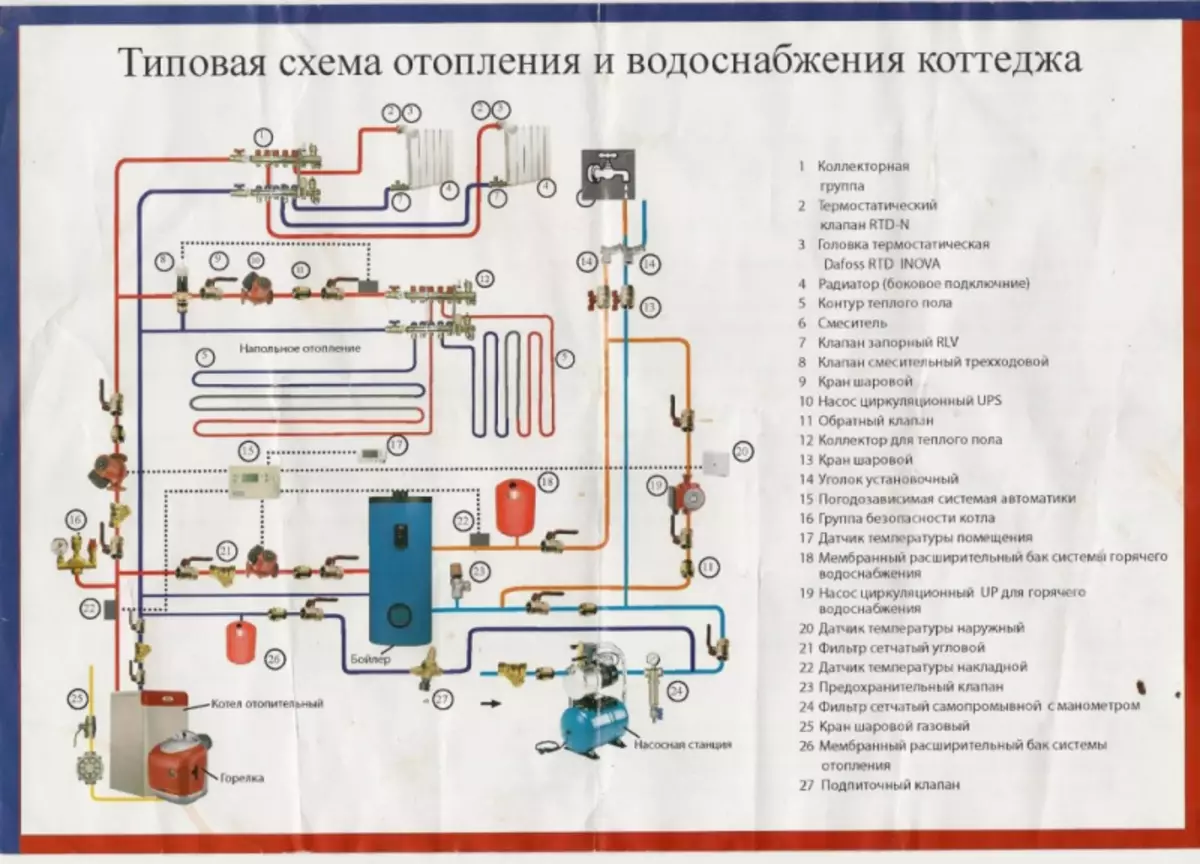
The diagram of the thermostat device.
At the time of transferring data from the thermal sensor to deviate the ambient temperature from the specified value, the rod is moving, as a result of which the position of the valve changes. This process is performed due to a change in the state of the sensitive element of the thermostat.
The sensitive element is a closed cavity (belliff) filled with liquid or gaseous substance. With a change in air temperature, the working substance decreases or increases in volume, as a result of which stretches or compresses the bellows. Smoothly changing in the amount, the bellows produces a gradual movement of the spool, which, in turn, with the help of the rod leads the valve in motion.
To efficiently work the thermostatic device, it is necessary to correctly select the type and size of the control valve. Its choice will depend on the heating system and the diameter of the screw hole or in the radiator tube. They are divided into two main types - RTD-N or RTD-G.
The first type of valve is designed to work in two-pipe heating systems located in modern high-rise buildings and in individual heating houses with forced circulation. RTD-G valves are installed in single-tube heating systems. This constructive element is designed specifically for Russian conditions, as a single-tube system - a phenomenon is quite rare for European countries. Possessing increased bandwidth, they can also be used for two-pipe heating systems.
Thermostats are installed at the vehicle supply location on the pipeline. It is necessary to put it so that the thermostatic element is in a horizontal position from the head of the coolant.
Article on the topic: Veranda to the house do it yourself
Where and how to position the thermostat
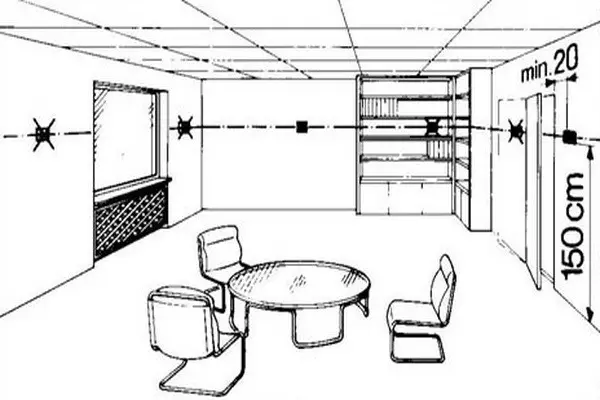
The layout of the thermostat.
The most needed a thermostat in the premises where there are significant temperature fluctuations during the day. It can be a kitchen with a working stove, rooms located on the sunny side, living room, children's, bedrooms, various public buildings in which there may be a long lull.
To get the desired effect from installing the thermostat, it is necessary to position it correctly and configure. To do this, it should not be hidden behind the curtains, decorative lattices, cabinets or installed in niches. To configure the thermostat, it is necessary:
- Maximum reduce heat loss. This will require tightly close all windows and doors in the room.
- Install a room thermometer.
- Open valve at full power. At the same time, the air temperature in the room will start rapidly grow.
- Wait for the moment when the air temperature becomes several degrees above the desired, then close the valve.
- When the temperature drops to the desired value, you can gradually open the valve. Hearing water noise and feeling the warming of the valve body, stop the closing and remember this position.
The use of the thermostat in the individual heating system reduces thermal energy costs by 20%, as a result of which fuel consumption decreases. A long service life and an excellent opportunity to save money allows you to completely recoup the cost of the device and its installation.
